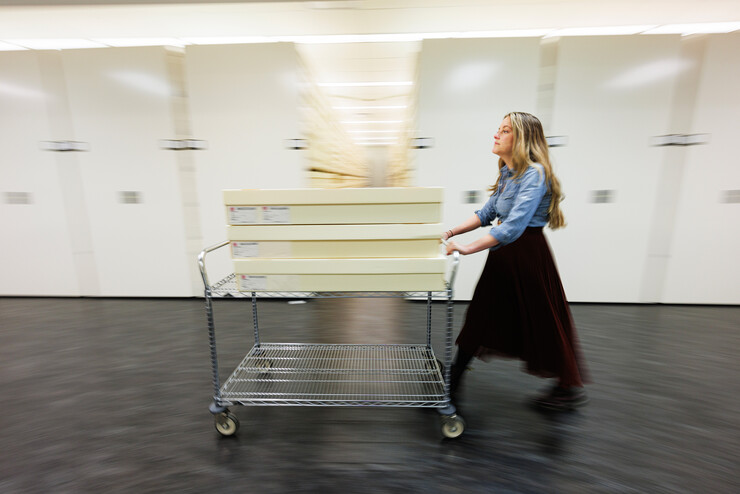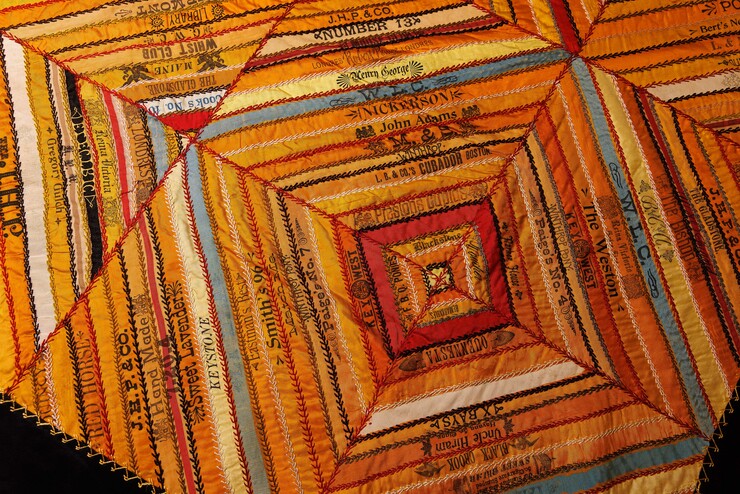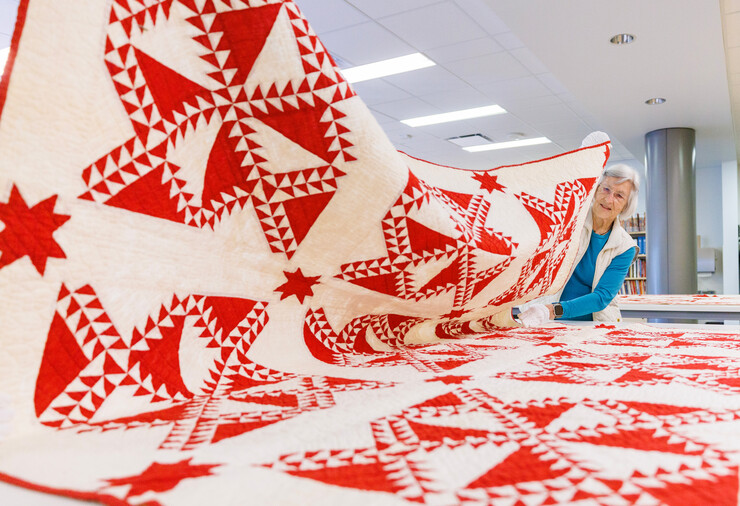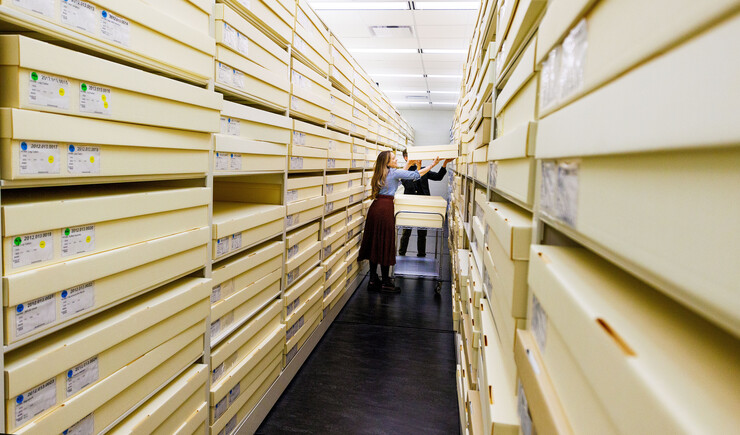· 6 min read
Quilt Museum preserves fabric of history
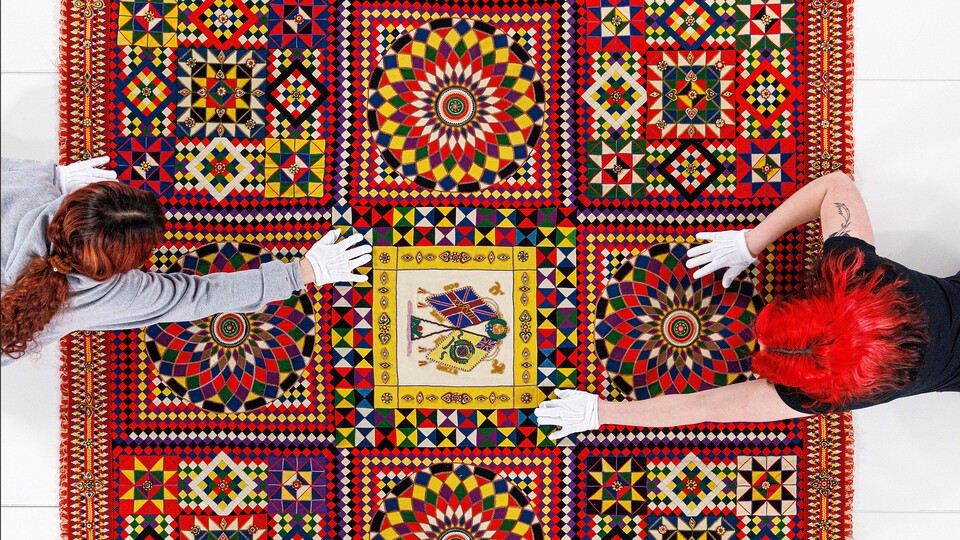
The diligent team at the International Quilt Museum maintains and prepares the world’s largest public quilt collection for exhibition, research and enjoyment by local and international visitors.
Located at the University of Nebraska–Lincoln, the museum is a world-renowned institution that showcases the rich and diverse history of quilting. Founded in 1997, it quickly became one of the world’s largest and most comprehensive collections of quilts and related textiles, boasting more than 9,000 quilts and over 2,500 quilt-related objects. The museum welcomes over 20,000 people each year, including Midwesterners who add the museum to their summer road trip list and those who make dedicated trips from as far as Australia.
“A material-cultural approach says that we can learn as much about a given culture from the objects they created as we can from written texts or other traditional means,” said Sarah Walcott, collections manager at the museum. “I think it’s a really interesting way to view history. Quilts were traditionally made by women and others who didn’t get a lot of say in the writing of history.”
The museum is dedicated to securing a comprehensive collection that covers a broad scope of history.
“We try to be broadly representative,” Walcott said. “We have quilts from 60-plus countries over a 400-year time span, and we’re working on acquiring more international quilts.”
This broad collection makes the International Quilt Museum one of the only of its kind. In contrast, the National Quilt Museum only collects works that were made after 1980.
The process for quilt acquisition, preservation and exhibition is intricate. Quilt acquisition is voted on by a committee. Some quilts are donated, but as the museum focuses acquisitions on international, art, and contemporary pieces, the majority are purchased.
Once a quilt arrives at the museum, it is carefully unpacked. After being unpacked, the quilts are sealed in plastic for two weeks to ensure no insect life is present on the quilts. Following isolation, the team uses special vacuums to remove dust, which has sharp edges on a microscopic level. Plastic screens protect the quilts during vacuuming. After vacuuming, the quilts are inspected, accessioned and categorized by type of object, techniques used to make it, measurement, stitches per inch, etc. A condition report noting any issues is also completed.
When a quilt has been properly cleaned and documented, it is photographed in a dedicated photo studio.
Once photographed, the quilts are carefully packaged and housed in acid free boxes with acid free tissue. Boxes are the most efficient use of space, and two quilts typically fill each box. The boxes are categorized and stored for safe keeping. Flat storage and other solutions are used for pieces that can’t be folded.
The quilts are stored until they are needed for research purposes, for loaning or for display in one of the museum’s exhibits. The museum loans quilts to other museums and for educational purposes. The museum also receives loaned exhibits for display, such as “Uncovering Black History: Quilts from the Collection of Carolyn Mazloomi,” which is featured in the museum through March 25.
At any given time, the museum could have more than 100 quilts from its collection on display. Due to the time it takes to prepare the quilts for exhibition, the exhibits are planned two to three years in advance.
“Almost everything will be displayed at some point,” Walcott said. “It’s just with that many quilts, it can take years before something is exhibited. Usually, it has more to do with what the specific exhibitions are. For example, we have quilts from World War I and we have quilts from a very specific niche tradition in the Miami Valley of Ohio. So while a particular quilt might not have fit into any of our exhibition categories yet, it’s just a matter of time.”
There are however, quilts that may never be exhibited. Some quilts in poor condition go through deaccession and are typically auctioned off. Others are maintained for research purposes.
“It’s not just about collecting, but also storing, preserving, exhibiting,” Walcott said. “Research is a big part of that and also that we are trying to represent as broad a swath of quilt making as we can and preserve that as long as we can.”
Walcott started working at the museum as a volunteer in 2014. Since then, she’s earned her master’s degree in textile history from Nebraska U. She worked other positions before being named collections manager in 2018.
The International Quilt Museum is open Tuesday-Saturday from 10 a.m. to 4 p.m. Learn more about the museum.
